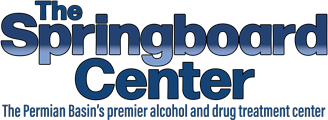A person collapses in front of you. Their breathing sounds wrong. Their skin color changes. You have seconds to decide what action could save their life.
Medical emergencies can look nearly identical but require completely different responses. When someone becomes unresponsive, knowing whether it’s cardiac arrest or an opioid overdose determines whether they live or die. These two critical conditions share alarming symptoms like unconsciousness and breathing problems, but they have distinct causes and need specific treatments.
Cardiac arrest happens when the heart suddenly stops pumping blood to vital organs. The brain begins dying within minutes without immediate CPR. Opioid overdose occurs when drugs slow breathing and heart rate to dangerous levels. Without the right medication, the person can suffocate even while their heart still beats.
Understanding the difference between cardiac arrest and opioid overdose helps you respond correctly when every second counts. The wrong treatment approach wastes precious time that could mean permanent brain damage or death. Learning the difference between cardiac arrest and opioid overdose can mean the difference between life and death for someone you care about.
Related: What Is the Number One Drug Used by Teens Today?
What Causes Cardiac Arrest vs Opioid Overdose
Medical emergencies happen for different reasons. The difference between cardiac arrest and opioid overdose starts with understanding what triggers each condition.
Heart-Related Triggers That Lead to Cardiac Arrest
Cardiac arrest occurs when your heart suddenly stops beating effectively. This happens when electrical signals in your heart become disrupted or stop working completely.
Heart attacks are a leading cause of cardiac arrest. When blood flow to part of your heart muscle gets blocked, it can trigger dangerous heart rhythms. These abnormal rhythms prevent your heart from pumping blood to your brain and other vital organs.
Other causes of cardiac arrest include severe heart disease, electrical problems in the heart, and sudden trauma to the chest. Drowning, choking, or severe bleeding can also lead to cardiac arrest. Sometimes, cardiac arrest happens without warning in people who seemed perfectly healthy.
Drug-Related Factors That Cause Opioid Overdose
Opioid overdose happens when someone takes too much of an opioid drug. These substances slow down your central nervous system, including your breathing and heart rate.
Prescription painkillers like oxycodone, hydrocodone, and morphine can cause overdose. Street drugs like heroin and fentanyl are extremely dangerous and can cause fatal overdoses even in tiny amounts. Fentanyl is particularly deadly because it’s much stronger than other opioids.
Mixing opioids with alcohol or other drugs increases overdose risk significantly. Taking opioids after a period of not using them also raises the chance of overdose. Your body loses tolerance when you stop using, making previous doses potentially fatal.
Underlying Health Conditions That Increase Risk
Several health conditions make both cardiac arrest and opioid overdose more likely. Heart disease, diabetes, and high blood pressure increase cardiac arrest risk. These conditions damage your heart over time and make it more vulnerable to sudden failure.
Mental health conditions like depression and anxiety often lead to substance abuse. People with chronic pain may become dependent on prescription opioids. Previous overdoses greatly increase the risk of future overdoses.
Age also plays a role in both conditions. Older adults face higher cardiac arrest risk due to age-related heart changes. Opioid overdose affects people of all ages.
How to Recognize Cardiac Arrest Symptoms

Knowing cardiac arrest symptoms helps you act quickly when someone needs help. These signs appear suddenly and require immediate emergency response.
Physical Signs of Heart Failure
Someone having cardiac arrest will collapse suddenly and lose consciousness completely. They won’t respond to loud voices, shaking, or pain. Their skin may turn blue or gray, especially around the lips and fingernails.
You won’t be able to feel a pulse at their wrist or neck. Their body may feel limp and lifeless. Some people experience brief seizure-like movements right after cardiac arrest begins, but this stops quickly.
The person’s chest won’t rise and fall normally. They may make occasional gasping sounds, but this isn’t real breathing. These gasps happen because the brain stem still tries to trigger breathing even though the heart has stopped.
Breathing Pattern Changes During Cardiac Events
Normal breathing stops completely during cardiac arrest. The person won’t take regular breaths, and their chest won’t move up and down. You might see occasional gasping or choking sounds, but these aren’t effective breaths.
Some people make agonal breathing sounds during cardiac arrest. These are irregular, gasping breaths that sound labored or strange. Agonal breathing isn’t real breathing and doesn’t provide oxygen to the body.
If you’re not sure whether someone is breathing normally, look, listen, and feel for breath for no more than 10 seconds. Place your ear near their mouth and nose while watching their chest. If breathing seems absent or abnormal, start CPR immediately.
Response Level Indicators in Cardiac Arrest
People in cardiac arrest are completely unresponsive. They won’t open their eyes, move, or make any sounds when you try to wake them. Shaking their shoulders firmly or shouting their name won’t get any response.
Try the “shake and shout” method to check responsiveness. Tap their shoulders firmly while calling their name loudly. If they don’t respond at all, assume cardiac arrest and begin emergency treatment immediately.
Unlike other medical emergencies, there’s no partial consciousness with cardiac arrest. The person is either responsive or completely unresponsive. There’s no in-between state where they might mumble or move slightly.
Key Signs When Determining Opioid Overdose
Opioid overdose signs are different from cardiac arrest symptoms. Learning these specific signs helps you provide the right emergency treatment and understand the difference between cardiac arrest and opioid overdose.
Skin Color and Temperature Changes
People experiencing opioid overdose often have blue or purple lips and fingernails. Their skin may look pale, gray, or have a bluish tint. This happens because opioids slow breathing so much that oxygen levels drop dangerously low.
Their skin often feels cold and clammy to the touch. You might notice their face looks pale or ashen. These color changes happen gradually as breathing becomes more shallow and less frequent.
Unlike cardiac arrest, where skin changes happen quickly, opioid overdose skin changes develop over time. The person’s circulation slows down, but their heart usually keeps beating during an overdose.
Pupil Size and Eye Response Patterns
Opioid overdose causes very small, pinpoint pupils that don’t respond to light changes. If you shine a flashlight in their eyes, the pupils won’t get smaller or larger. This is one of the most reliable signs of opioid overdose.
Their eyes might be open but appear glassy or unfocused. Some people’s eyes roll back or flutter during an overdose. They might look like they’re awake but can’t focus on anything around them.
Even if the person seems unconscious, checking their pupils can confirm opioid overdose. Normal pupils get smaller in bright light and larger in dim light. During overdose, pupils stay tiny regardless of lighting conditions.
Breathing Rate and Sound Variations
Opioid overdose causes extremely slow, shallow breathing or complete breathing stops. You might count fewer than 10 breaths per minute, compared to the normal 12-20 breaths per minute. Their breathing sounds weak and barely noticeable.
Listen for gurgling, choking, or rattling sounds when they breathe. These sounds happen when saliva or vomit blocks their airway. The person might make snoring sounds or seem to struggle for each breath.
Some people stop breathing completely during severe overdose. However, unlike cardiac arrest, their heart often continues beating during opioid overdose. This means CPR techniques need to focus on rescue breathing rather than chest compressions.
Critical Differences in Emergency Response

The difference between cardiac arrest and opioid overdose becomes crucial when providing emergency care. Each condition requires specific treatment approaches. Emergency responders face cardiac arrest vs. opioid overdose decisions daily, and knowing which treatment to provide first can save lives.
CPR Techniques for Cardiac Arrest Situations
Cardiac arrest requires immediate CPR with chest compressions and rescue breathing. Place the heel of one hand on the center of their chest, between the nipples. Put your other hand on top and interlace your fingers.
Push hard and fast at least 2 inches deep at a rate of 100-120 compressions per minute. Let the chest return completely between compressions. Continue until help arrives.
After 30 chest compressions, give 2 rescue breaths. Tilt their head back, lift their chin, and seal your mouth over theirs. Give each breath over 1 second and watch for chest rise. Continue cycles of 30 compressions and 2 breaths until help arrives.
For those struggling with substance abuse, comprehensive care including medical detox can provide a safe foundation for recovery and reduce the risk of future medical emergencies.
Naloxone Administration for Opioid Overdose Treatment
Naloxone (Narcan) is the specific opioid overdose treatment that can reverse the effects quickly. Give naloxone immediately if you suspect opioid overdose, even if you’re not completely sure.
Nasal spray naloxone is easiest to use. Remove the cap, insert the device in their nostril, and press firmly to release the medication. If they don’t respond within 2-3 minutes, give a second dose in the other nostril.
Auto-injector naloxone works by pressing against their thigh through clothing. The device will inject the medication automatically. Follow the voice prompts if your naloxone device has them.
After giving naloxone, the person might wake up confused or agitated. Stay with them because naloxone wears off in 30-90 minutes. If opioids are still in their system, they could overdose again.
When to Call 911 vs Additional Emergency Steps
Call 911 immediately for both cardiac arrest and opioid overdose. Don’t waste time trying to figure out which condition it is – both require professional medical help right away. Understanding the difference between cardiac arrest and opioid overdose helps you provide appropriate first aid while waiting for paramedics.
For cardiac arrest, start CPR while someone else calls emergency services. If you’re alone, call 911 first, then begin CPR. Don’t leave the person to find help unless absolutely necessary.
For opioid overdose, call 911 even if naloxone wakes the person up. They need medical evaluation because naloxone wears off and they could overdose again. Many states have Good Samaritan laws that protect people who call for help during overdoses.
Stay on the phone with emergency dispatchers. They can guide you through CPR or naloxone administration if you’re unsure. Keep the person as comfortable as possible until paramedics arrive.
Recovery and Long-Term Treatment Considerations
Both cardiac arrest and opioid overdose survivors need ongoing medical care and support for full recovery.
Hospital Care Following Cardiac Arrest Events
Cardiac arrest survivors require intensive hospital monitoring to prevent complications. Doctors will run tests to find out what caused the cardiac arrest and treat underlying heart problems.
Brain damage can occur if the heart stops for too long. Hospital teams will monitor neurological function and provide treatments to protect brain health. Some patients need mechanical ventilation or other life support measures.
Recovery time varies greatly depending on how long the heart was stopped. Some people recover completely, while others may have lasting effects on heart function.
Long-term treatment often includes medications and lifestyle changes. Regular follow-up care helps prevent future cardiac events.
Medical Monitoring After Opioid Overdose Recovery
Opioid overdose survivors need immediate medical evaluation even after naloxone treatment. Healthcare providers will monitor breathing, heart rate, and consciousness levels for several hours.
Since naloxone wears off in 30-90 minutes, medical teams watch for signs of renewed overdose. Some people need multiple naloxone doses until all opioids clear their system.
Blood tests help determine what substances caused the overdose and guide treatment decisions. Medical providers will check for complications like pneumonia from vomit aspiration or injuries from falling during overdose.
Mental health evaluation is important because overdose often indicates severe addiction problems. Many people feel embarrassed or scared after overdose, but honest communication with healthcare providers leads to better treatment outcomes.
Our residential program provides 24/7 medical supervision and comprehensive addiction treatment to help prevent future overdoses. We understand the importance of life-saving medical intervention in the use of overdoses — once emergencies are subsided, we welcome willing participants into our care as a completely abstinence-based medical facility.
Addiction Treatment Options for Overdose Survivors
Surviving an overdose often serves as a wake-up call about the severity of addiction. Professional treatment significantly reduces the risk of future overdoses and helps people build lasting recovery.
Detoxification programs provide medical supervision during withdrawal from opioids. This process can be uncomfortable and sometimes dangerous without proper medical care. Professional detox ensures safety and comfort during early recovery.
Counseling and therapy address the underlying causes of addiction. Individual therapy helps people understand their addiction patterns and develop healthy coping strategies. Group therapy connects people with others who understand their struggles.
Intensive outpatient programs like ours allow people to maintain work and family responsibilities while receiving structured addiction treatment. These programs typically include counseling, education, and relapse prevention training.
Long-term recovery support helps maintain sobriety after initial treatment. Sober living facilities like Springboard Center provide structured, 100% drug-free housing for people transitioning back to independent living.
Find Professional Addiction Treatment at The Springboard Center
If you or someone you love is struggling with opioid addiction, professional help is available. The Springboard Center provides comprehensive addiction treatment services designed to address the whole person – mind, body, and spirit.
Our evidence-based approach includes medical detoxification, residential treatment, and intensive outpatient programs. We understand that addiction affects entire families, which is why our family program helps loved ones heal together.
Located in Midland, Texas, our facility serves the Permian Basin region and beyond. Our treatment success rates are 70% higher than national averages because we combine proven medical treatments with compassionate care. Don’t wait for an overdose to seek help – recovery is possible and you don’t have to face addiction alone. Contact us today to learn how our comprehensive programs can help you build lasting recovery at The Springboard Center.




